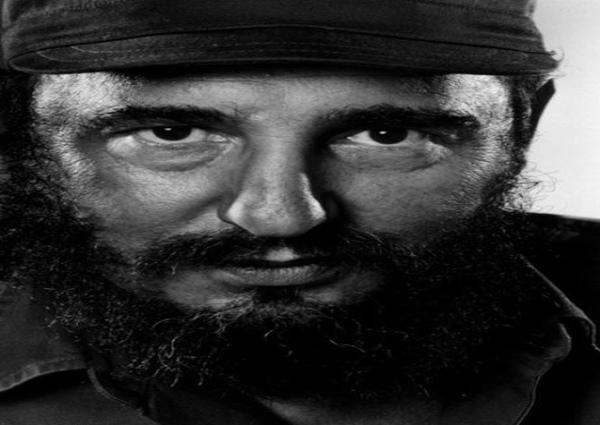27/11/2016
It’s heaven to be a revolutionary when you are a 33-year-old, the age when Fidel Castro (1926-2016) came to power by overthrowing the Batista Regime in 1959, and it’s divine when you remain one at the age of 90. Castro remained a staunch Communist throughout his life, resisting his own people’s desire to convert Cuba into a capitalist country and thwarting each attempt of the U.S. to crush his nation. Deserters who run away from Cuba, seeking asylum in the U.S. shores, perhaps have a different story to tell about Castro; an oppressor and autocrat who curbed every potential uprising against him. The image of Castro has always been that of an angry God, like the agitated Moses by Michelangelo, with a flowing beard and glowing eyes and the tablets of ten commandments almost falling off.
With Castro leaving the scene, the possibility of the red patches in the world map shrinking further becomes a painful reality. In India, with just two states under Communist rule, no one can predict the re-emergence of the ideology, especially when a fiery revolutionary like Castro becomes memory. How strong was/is Castro’s image in the minds of the Indian communists? Why is it that in every propaganda posters, wall graffiti, flex boards and stage backdrops of the left in Kerala we see the romantic, universally identifiable face of Che Guevara, and those of Karl Marx, Frederick Engels, and Vladimir Lenin, but not Fidel Castro? Was there something in the face of Castro that wasn’t really Communist like, which deprived him of a due space among the pantheon of Communist gods?
When it comes to image proliferation, it is indisputable that Che has a universal standing. Che was assassinated when he was just 39. Only lovers, poets and revolutionaries die young. Their death gives them the aura of eternity as Keats had sung in his ‘Ode on a Grecian Urn:’ they all remain young forever. Young people, irrespective of their race, nationality, religion, caste, education and economic/social status, are rebels and they easily identify with Che, which I believe has damped the ‘image’ of Castro among the rebels all over the world. Lenin led the people to revolution, Marx and Engels, with their hermit like appearance, gave a theoretical frame work to the International communism. Lenin didn’t live to rule for long, Marx and Engels didn’t participate in street revolution. Castro did and he did project a human face of revolution, and it was hard to believe that he would die. Perhaps, this godly impression had given Castro a place in millions of minds not as an image but as an idea.
Nevertheless, I don’t mean to say that Castro didn’t have a physical image as in a pin-up poster. The image of Castro had evolved in the early days of revolution itself. In the beginning he was a clean shaven young rebel who tried to make a coup in Cuba, failed, and jailed for a year. Then Castro appears in public as a cigar smoking, bearded and rugged leader in his military fatigue, adequately armed, with a smile of authority on his lips. It takes no time for Castro to assume the image of a chest-thumping, aggressive military dictator occasionally showing a sense of humor and candid display of affection as he did with Indira Gandhi in 1983, with a bear hug. One of the Malayalam newspapers captioned it as ‘Viplavathinte Sukra nakshatrathil ninnum oru alinganam’ (A hug from a Revolutionary Star). However, the eyes and posture of Castro must have been failing him from developing a complete rapport with international young rebels. His eyes showed doubt, skepticism and cunning, and his body language defensive.
The Malayalee psyche is such a zone where only friendly despots and patriarchs have a place. While Che left his roles as the minister of industries, president of the national bank and also the chief military instructor in the post revolutionary Cuba and marched on to spread revolution elsewhere until he was captured by the Bolivian army and had him executed, Castro was consolidating his power and turning Cuba into the headquarters of Western Communism and a strategic ally of the Soviet Union. Castro, knowing his precarious position in the region, always watched out for possible assassination attempts and coups, and thwarted every such move with iron fists. Even Alfred Hitchcock couldn’t resist making a film based on the possible espionage attempts on Cuba in his thriller titled 'Topaz.’ However, Castro was losing out to Che as an image. Revolution, if it needs to be cherished, has to have martyrs than rulers.
Che raises his chin in defiance from T-shirts, coffee mugs, caps and badges, especially in Kerala college campuses and in the meetings of the Students Federation of India (SFI) and Democratic Youth Federation of India (DYFI), imparting the same romanticism of revolution to carriers of his image. Interestingly, Castro’s name was recently taken out and dusted only to honor the complaining Communist veteran and former chief minister, V.S.Achuthanandan, who is 93 years old. It’s ironical that a geriatric leader’s name (not an image) was carefully selected to adore V.S., perhaps as an indirect message to him that leaders of such age should retire and pass the baton to the younger ones. Fidel’s folly was his longevity as a living veteran, and everyone wanted him to be eternally young. I think there is a message not only for the politicians but for the superstars in the entertainment industry too: longevity doesn’t assure immortality to an image.
Photo credit: Ludie Cochrane via Foter.com / CC BY Eric.Parker via Foter.com / CC BY-NC


